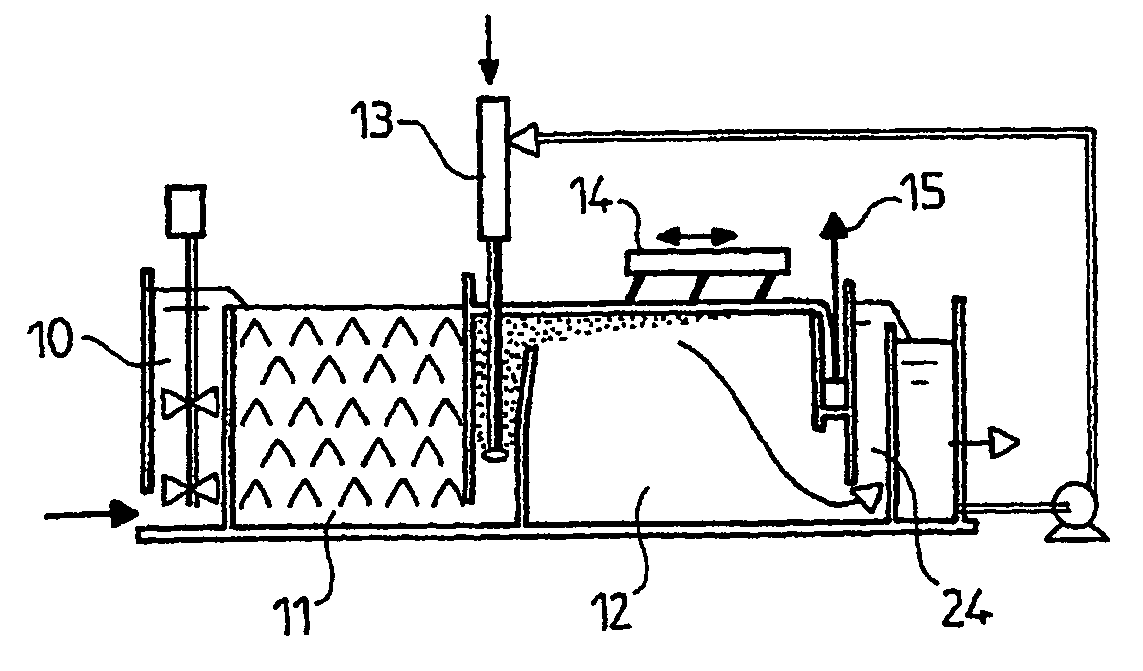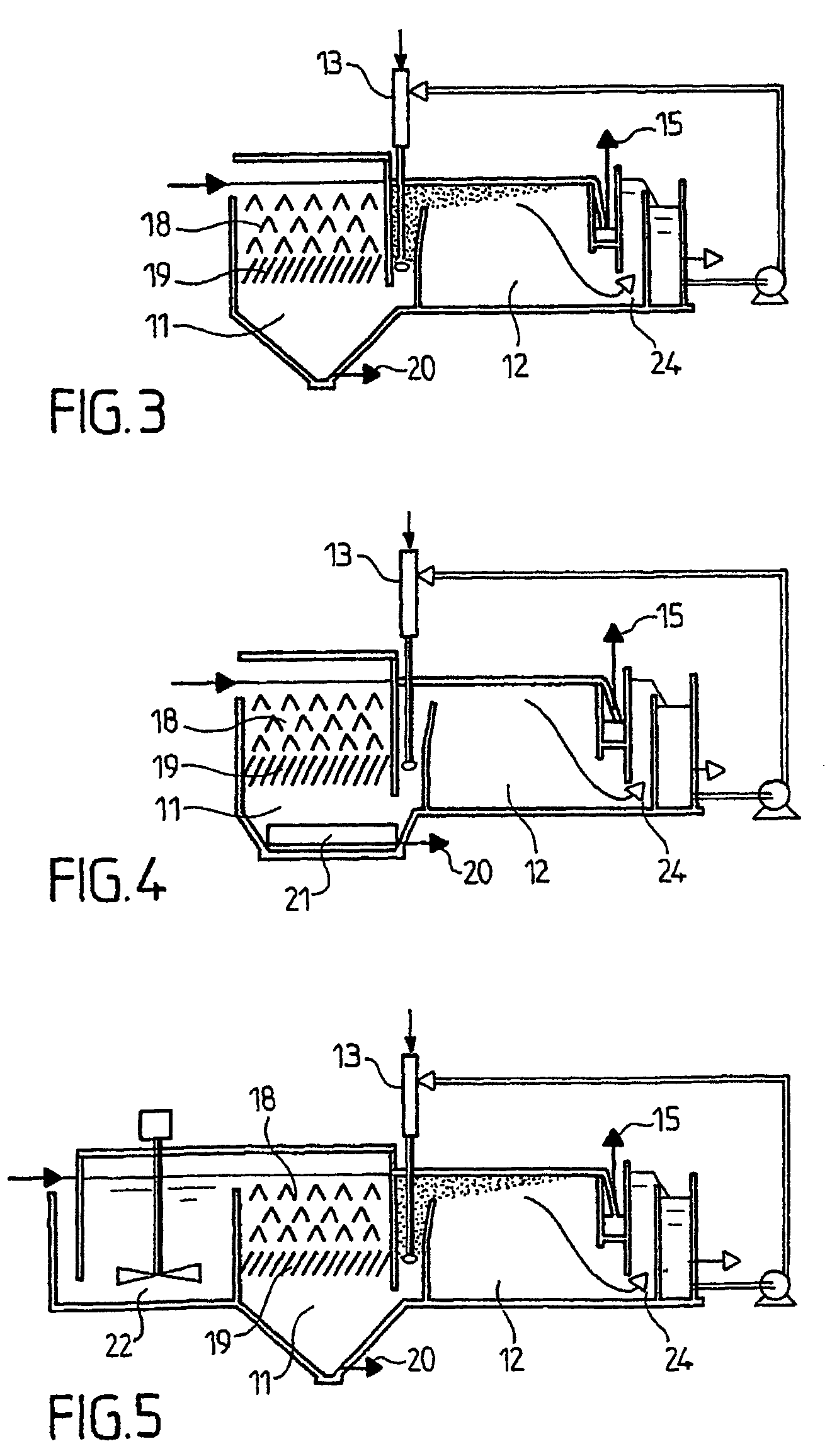Method and device for clarification of liquids, particularly water, loaded with material in suspension
- Summary
- Abstract
- Description
- Claims
- Application Information
AI Technical Summary
Benefits of technology
Problems solved by technology
Method used
Image
Examples
Embodiment Construction
[0031]FIG. 1 shows the flocculator 11 and the flotation unit 12 with its surface scraper 14. According to the invention, a static flocculator with deflectors 18, under which a lamellar settling module 19 is placed, is positioned upstream of the flotation unit 12. The combination of the flocculator 18 and the lamellar settling module 19 constitutes the zone of downflow static flocculation—primary separation of heavier particles, said particles being removed at 20 in the bottom portion of this zone.
[0032]Thanks to this arrangement, the invention can be used to treat most types of waters, including those containing particles that are too light to settle and too heavy to float.
[0033]The lamellar settling module stage 19 situated under the baffles or deflectors of the static flocculator 18, in addition to the settling of the heavier particles, performs two supplementary functions:[0034]by increasing the number of deposition surfaces, it serves to retain particles of which the settling ra...
PUM
| Property | Measurement | Unit |
|---|---|---|
| Energy | aaaaa | aaaaa |
| Flocculation | aaaaa | aaaaa |
Abstract
Description
Claims
Application Information
 Login to View More
Login to View More - R&D
- Intellectual Property
- Life Sciences
- Materials
- Tech Scout
- Unparalleled Data Quality
- Higher Quality Content
- 60% Fewer Hallucinations
Browse by: Latest US Patents, China's latest patents, Technical Efficacy Thesaurus, Application Domain, Technology Topic, Popular Technical Reports.
© 2025 PatSnap. All rights reserved.Legal|Privacy policy|Modern Slavery Act Transparency Statement|Sitemap|About US| Contact US: help@patsnap.com



